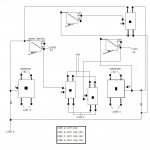Circuits serving equipments (electric consumed equipment, for example: grill, range, etc) under kitchen hood need to be protected by shunt-trip breakers.
If the above equipments utilize gas instead of electricity and need only 120V circuits for control.
Will these 120V control circuits need to be protected by shunt-trip breakers as well?
If the above equipments utilize gas instead of electricity and need only 120V circuits for control.
Will these 120V control circuits need to be protected by shunt-trip breakers as well?

